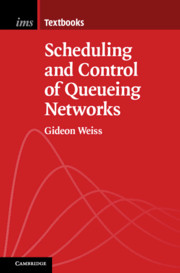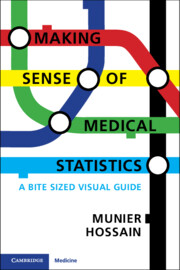Refine search
Actions for selected content:
52379 results in Statistics and Probability
ECT volume 37 issue 5 Cover and Front matter
-
- Journal:
- Econometric Theory / Volume 37 / Issue 5 / October 2021
- Published online by Cambridge University Press:
- 07 October 2021, pp. f1-f2
-
- Article
-
- You have access
- Export citation
Efficient Laplacian spectral density computations for networks with arbitrary degree distributions
-
- Journal:
- Network Science / Volume 9 / Issue 3 / September 2021
- Published online by Cambridge University Press:
- 07 October 2021, pp. 312-327
-
- Article
- Export citation
Large increase of vertebral osteomyelitis in France: a 2010–2019 cross-sectional study
-
- Journal:
- Epidemiology & Infection / Volume 149 / 2021
- Published online by Cambridge University Press:
- 06 October 2021, e227
-
- Article
-
- You have access
- Open access
- HTML
- Export citation
A network meta-analysis of secondary attack rates of COVID-19 in different contact environments
-
- Journal:
- Epidemiology & Infection / Volume 149 / 2021
- Published online by Cambridge University Press:
- 05 October 2021, e219
-
- Article
-
- You have access
- Open access
- HTML
- Export citation
GEOGRAPHIC RATEMAKING WITH SPATIAL EMBEDDINGS
-
- Journal:
- ASTIN Bulletin: The Journal of the IAA / Volume 52 / Issue 1 / January 2022
- Published online by Cambridge University Press:
- 04 October 2021, pp. 1-31
- Print publication:
- January 2022
-
- Article
- Export citation
Hepatitis C virus prevalence in Belgium
-
- Journal:
- Experimental Results / Volume 2 / 2021
- Published online by Cambridge University Press:
- 04 October 2021, e29
-
- Article
-
- You have access
- Open access
- HTML
- Export citation
PES volume 35 issue 4 Cover and Back matter
-
- Journal:
- Probability in the Engineering and Informational Sciences / Volume 35 / Issue 4 / October 2021
- Published online by Cambridge University Press:
- 04 October 2021, pp. b1-b2
-
- Article
-
- You have access
- Export citation
PES volume 35 issue 4 Cover and Front matter
-
- Journal:
- Probability in the Engineering and Informational Sciences / Volume 35 / Issue 4 / October 2021
- Published online by Cambridge University Press:
- 04 October 2021, pp. f1-f2
-
- Article
-
- You have access
- Export citation

Scheduling and Control of Queueing Networks
-
- Published online:
- 01 October 2021
- Print publication:
- 14 October 2021
Guiding principles to maintain public trust in the use of mobile operator data for policy purposes
-
- Journal:
- Data & Policy / Volume 3 / 2021
- Published online by Cambridge University Press:
- 01 October 2021, e24
-
- Article
-
- You have access
- Open access
- HTML
- Export citation

Making Sense of Medical Statistics
- A Bite Sized Visual Guide
-
- Published online:
- 30 September 2021
- Print publication:
- 21 October 2021
Continuous calibration of a digital twin: Comparison of particle filter and Bayesian calibration approaches
-
- Journal:
- Data-Centric Engineering / Volume 2 / 2021
- Published online by Cambridge University Press:
- 30 September 2021, e15
-
- Article
-
- You have access
- Open access
- HTML
- Export citation
Listeriosis associated with pre-prepared sandwich consumption in hospital in England, 2017
-
- Journal:
- Epidemiology & Infection / Volume 149 / 2021
- Published online by Cambridge University Press:
- 30 September 2021, e220
-
- Article
-
- You have access
- Open access
- HTML
- Export citation
The association of ABO blood types with host susceptibility to haemorrhagic fever with renal syndrome
-
- Journal:
- Epidemiology & Infection / Volume 149 / 2021
- Published online by Cambridge University Press:
- 29 September 2021, e221
-
- Article
-
- You have access
- Open access
- HTML
- Export citation
The first epidemiological and virological influenza surveillance in the Republic of Guinea revealed the predominance of influenza A/H3N2 and B Victoria viruses
-
- Journal:
- Epidemiology & Infection / Volume 149 / 2021
- Published online by Cambridge University Press:
- 28 September 2021, e223
-
- Article
-
- You have access
- Open access
- HTML
- Export citation
THE ET INTERVIEW: PROFESSOR GARY CHAMBERLAIN
- Part of
-
- Journal:
- Econometric Theory / Volume 39 / Issue 1 / February 2023
- Published online by Cambridge University Press:
- 28 September 2021, pp. 1-26
-
- Article
- Export citation
Expansion for the critical point of site percolation: the first three terms
- Part of
-
- Journal:
- Combinatorics, Probability and Computing / Volume 31 / Issue 3 / May 2022
- Published online by Cambridge University Press:
- 28 September 2021, pp. 430-454
-
- Article
-
- You have access
- Open access
- HTML
- Export citation
Star-shaped order for distributions characterized by several parameters and some applications
-
- Journal:
- Probability in the Engineering and Informational Sciences / Volume 37 / Issue 1 / January 2023
- Published online by Cambridge University Press:
- 28 September 2021, pp. 49-59
-
- Article
- Export citation
On deficiency problems for graphs
- Part of
-
- Journal:
- Combinatorics, Probability and Computing / Volume 31 / Issue 3 / May 2022
- Published online by Cambridge University Press:
- 27 September 2021, pp. 478-488
-
- Article
- Export citation
STATISTICAL INFERENCE WITH F-STATISTICS WHEN FITTING SIMPLE MODELS TO HIGH-DIMENSIONAL DATA
-
- Journal:
- Econometric Theory / Volume 39 / Issue 6 / December 2023
- Published online by Cambridge University Press:
- 27 September 2021, pp. 1249-1272
-
- Article
-
- You have access
- Open access
- Export citation






















